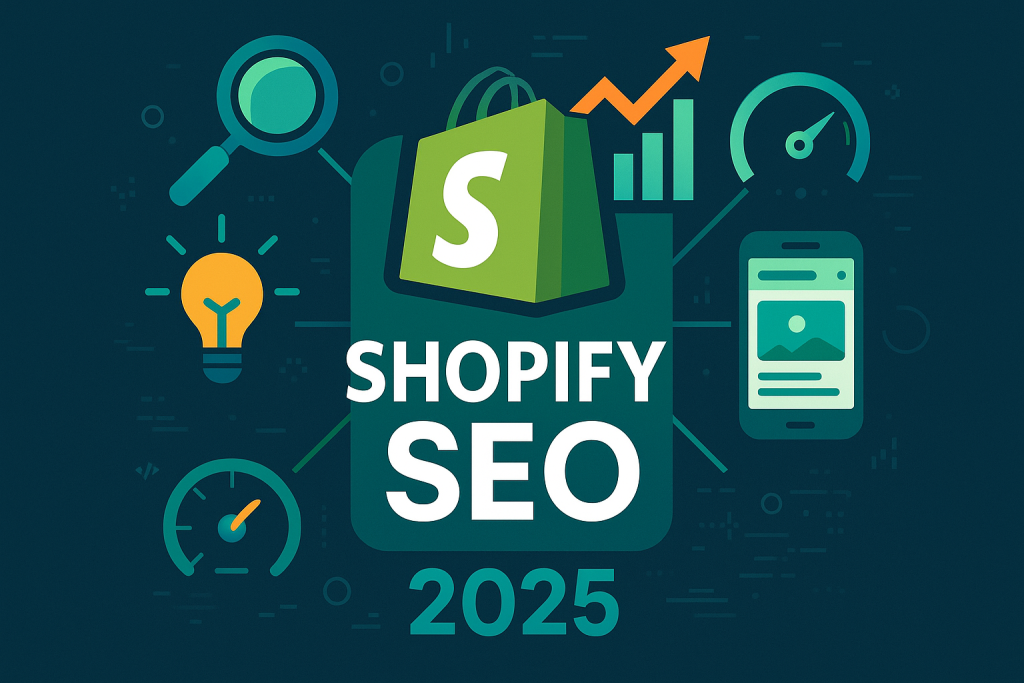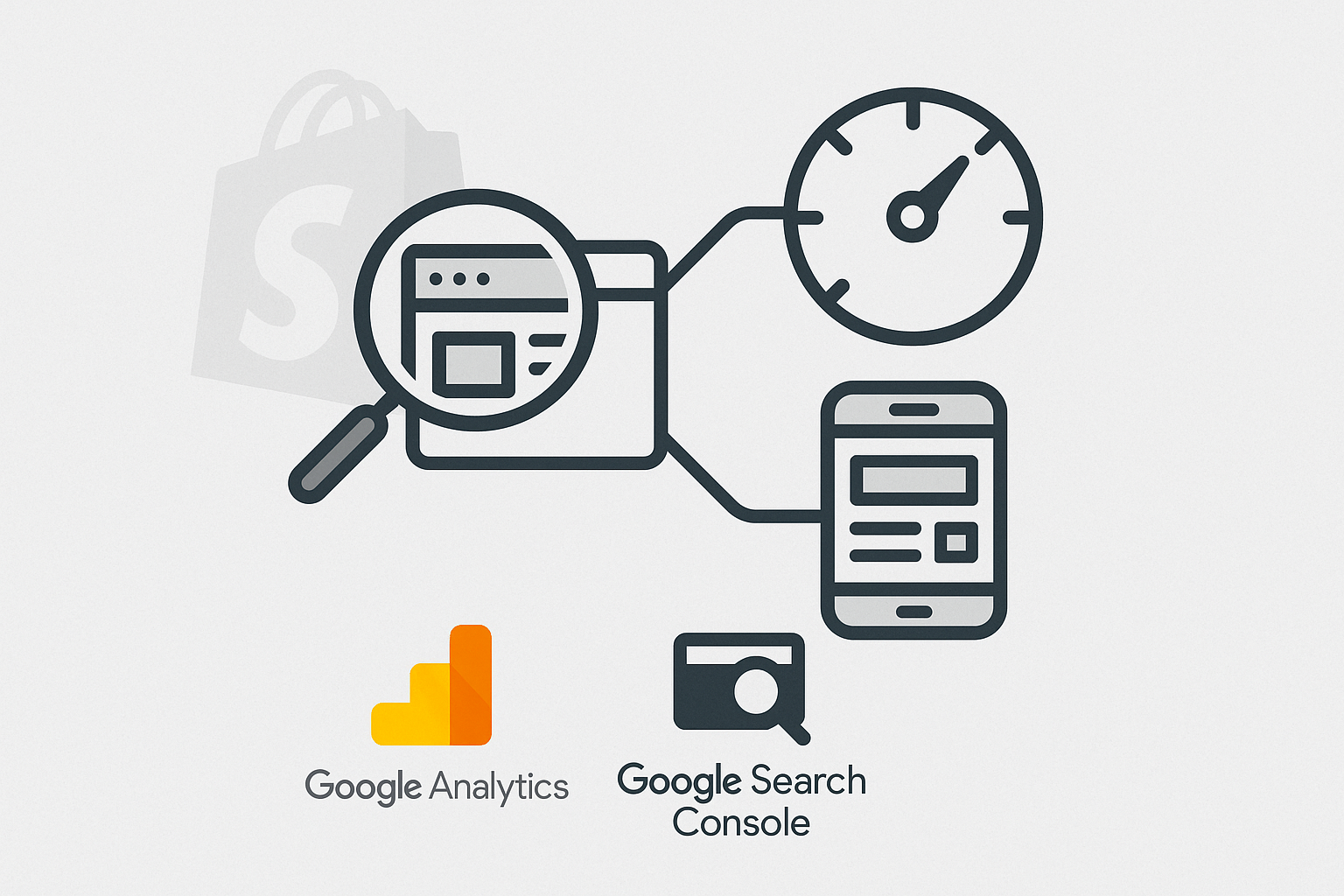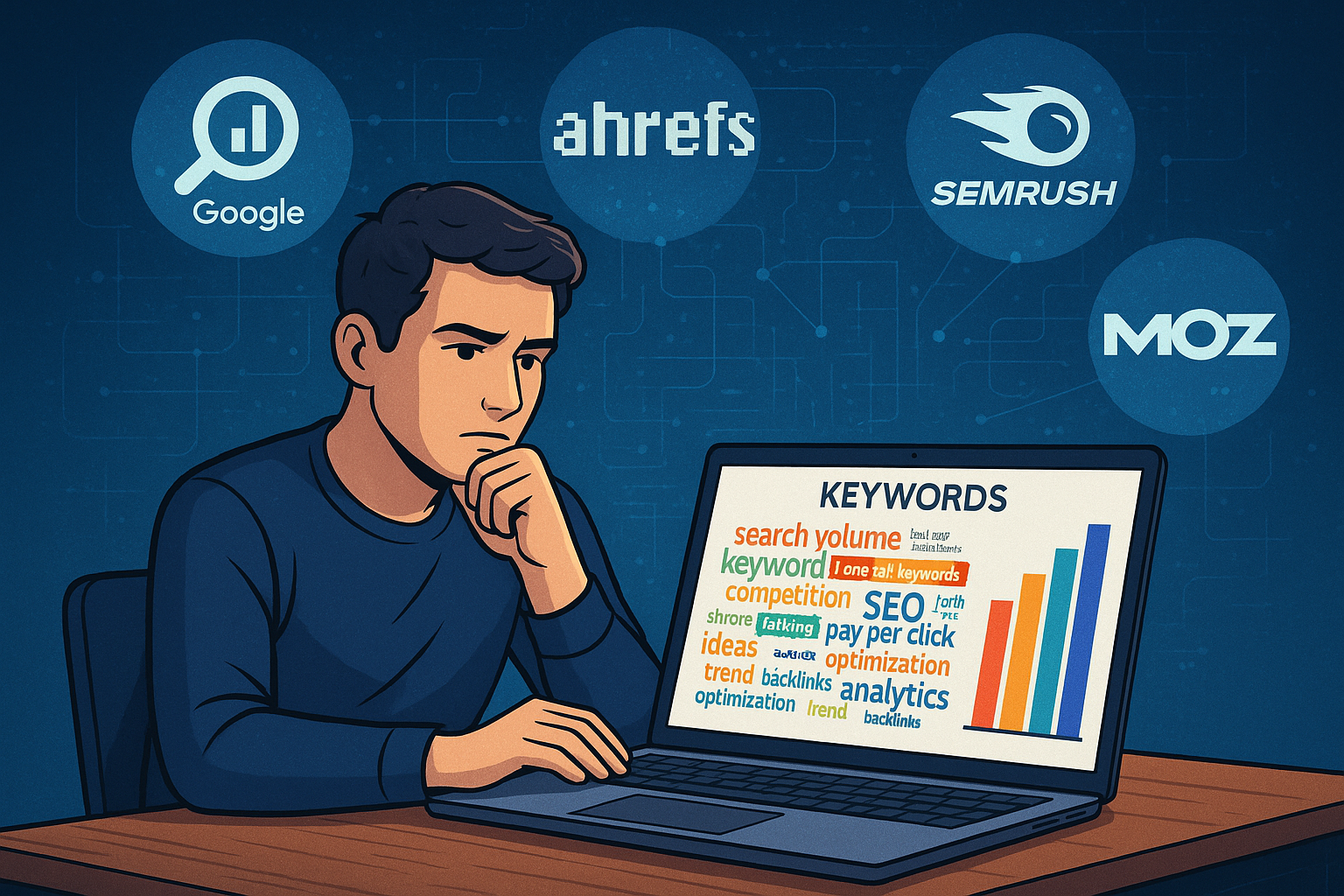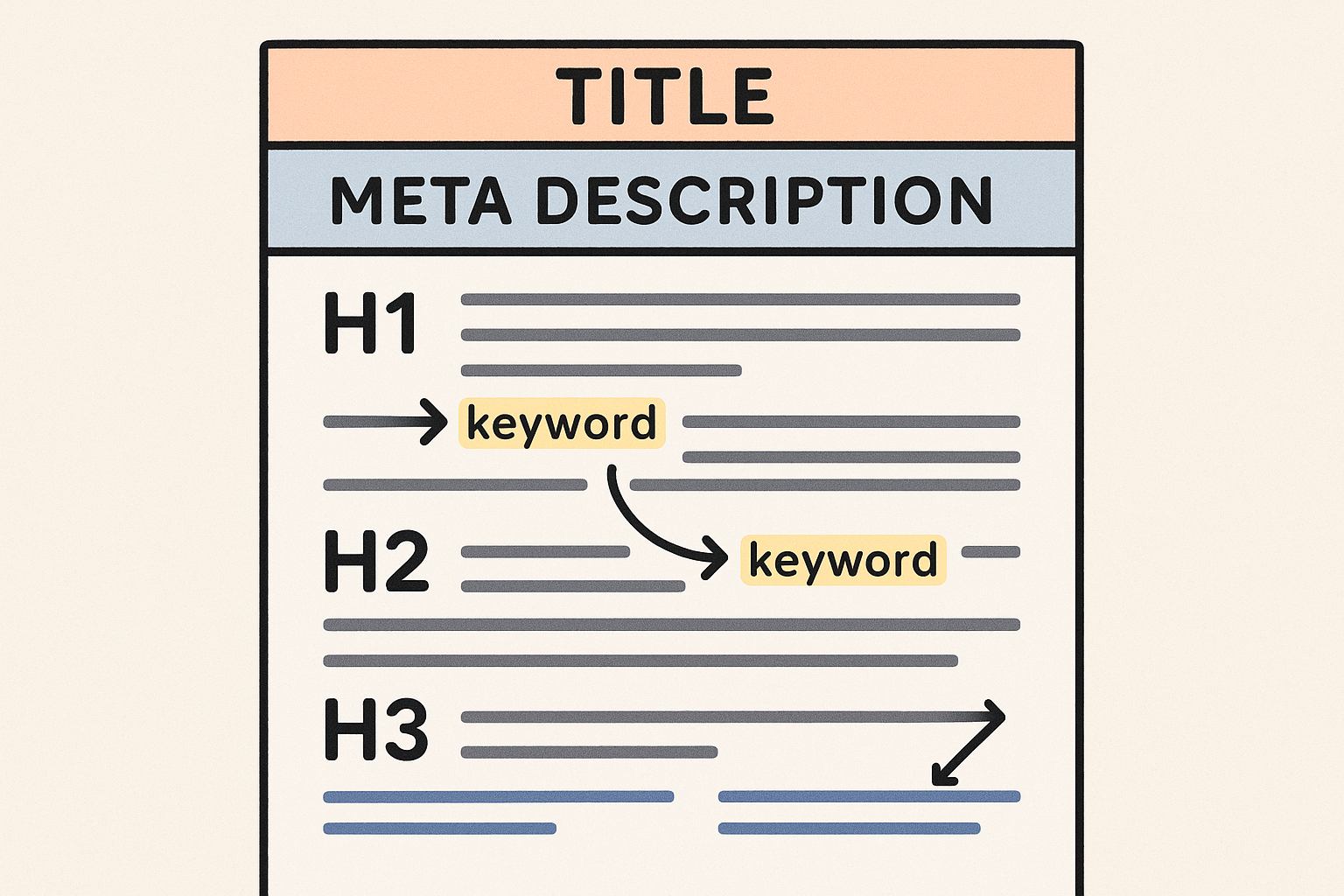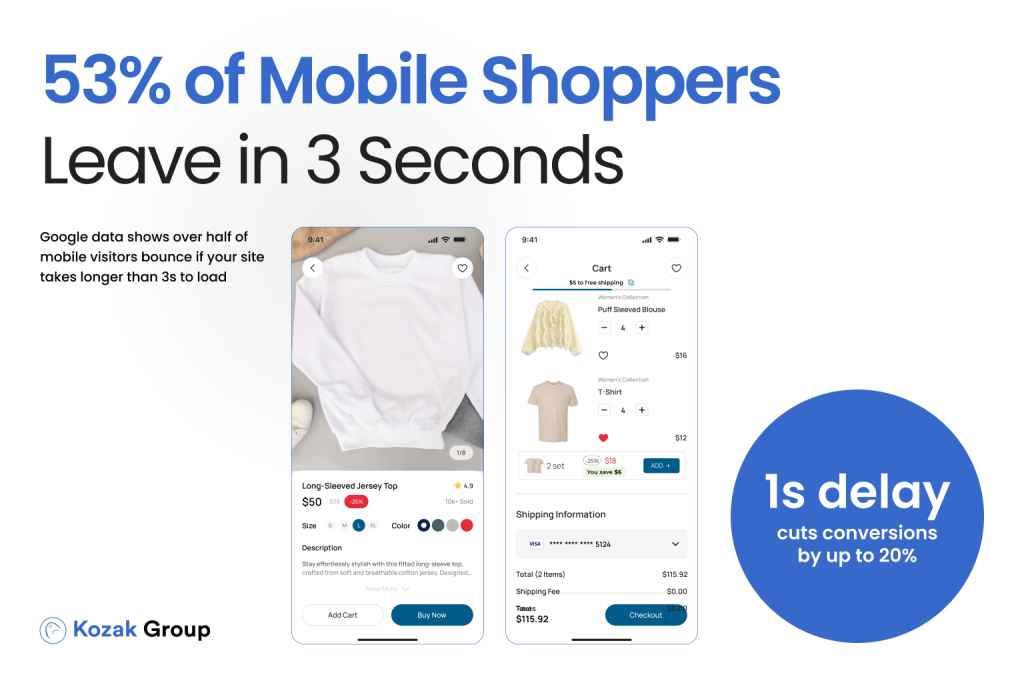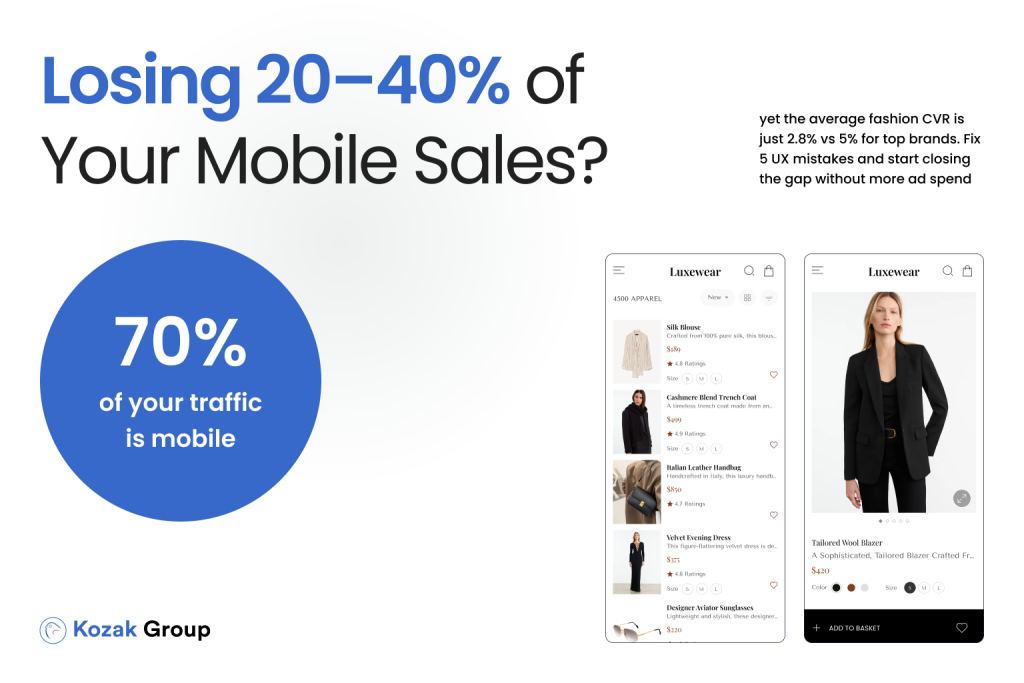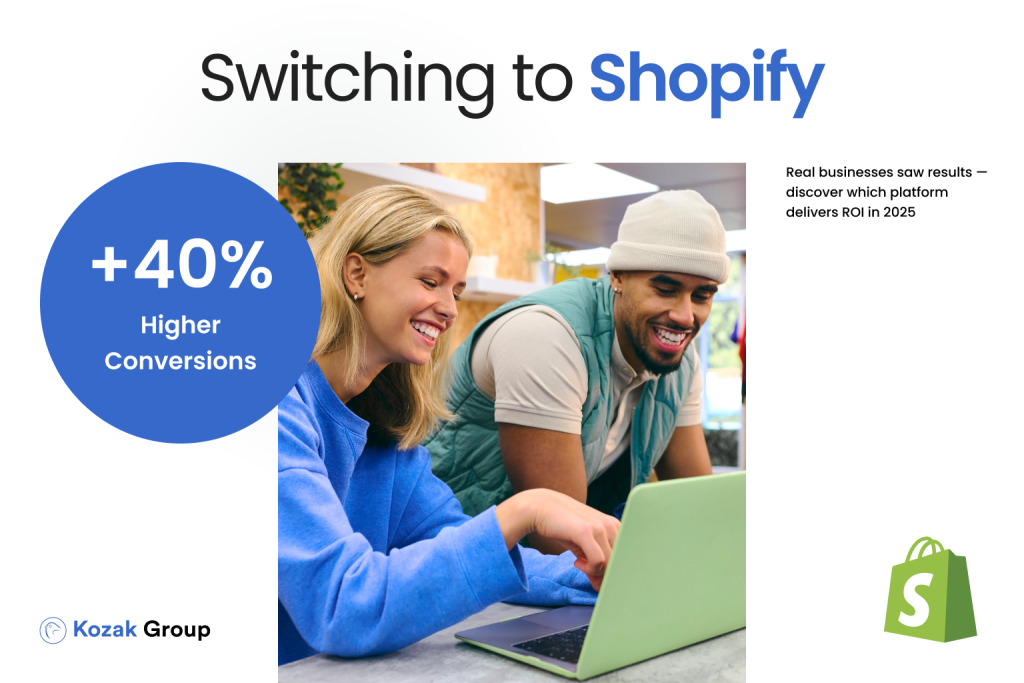Want to improve your Shopify store’s search engine ranking? This guide reveals the top 10 Shopify SEO tips to boost your visibility and drive more organic traffic. From effective keyword research to optimizing site structure, start mastering SEO Shopify for your store today.
Key Takeaways
- Master the basics of Shopify SEO, including setting up tracking tools and ensuring your site is public for search engine crawling.
- Keyword research is essential; focus on long-tail keywords to attract targeted traffic and regularly update your strategy based on performance.
- Optimize your product pages with relevant keywords, high-quality images, and detailed descriptions to improve visibility and drive conversions.
Introduction to SEO for Shopify
Search engine optimization (SEO) is a vital component for any Shopify store aiming to increase online visibility and attract more organic traffic. By optimizing your online store for search engines, you can ensure your products and content appear higher in search engine results for your target keywords. Shopify SEO involves a strategic blend of keyword research, technical improvements, and high-quality content creation to help your store stand out among competitors. When you focus on the right target keywords and implement proven SEO strategies, your Shopify store can reach a broader audience, drive more qualified traffic, and ultimately boost sales. Mastering SEO for Shopify stores is essential for long-term online success and sustained growth in organic traffic.
Shopify SEO Fundamentals
First, let’s cover the Shopify SEO basics. Mastering Shopify SEO fundamentals is key. Begin with setting up essential tracking tools such as Google Analytics and Google Search Console. These tools are invaluable for understanding your site’s SEO performance and guiding your strategy. Google Analytics tracks your website traffic, while Google Search Console offers insights into search queries driving traffic and monitors organic traffic. For a comprehensive approach, refer to our Shopify SEO guide.
Implementing a solid SEO strategy helps generate traffic and increase your store’s online visibility.
Ensure your online store is public so search engines can crawl and index your content, making it visible in search results. This allows search engine bots to crawl and index your site effectively. Choosing the right keywords, maintaining a logical site structure, and adhering to SEO best practices form the core principles of Shopify SEO, laying a strong foundation for online visibility.
Keyword Research for Shopify Stores
Keyword research is the cornerstone of any effective SEO strategy. It reveals what your customers are searching for, ensuring your content aligns with their intent. Tools that help with keyword research include:
- Google Keyword Planner
- Ahrefs
- SEMrush
- Moz
- Keyword Magic Tool These tools help identify relevant keywords, understand their competitiveness, and gauge their search volume, including informational keywords.
When selecting target keywords, also consider how they can be incorporated into the page URL for better search engine relevance and user experience.
Though they may have lower search volumes, long-tail keywords excel at capturing specific search intent and are generally easier to rank for. Focusing on these chosen keywords can attract highly targeted traffic to your Shopify store. Understanding customer search terms behavior refines your marketing strategies and informs your product offerings, especially when considering the target keyword.
Regularly revisiting and analyzing related keywords performance is essential. As search patterns evolve, so should your keyword strategy. This ongoing process keeps your content relevant and continues to attract organic traffic.
Optimizing Your Shopify Site Structure
A well-structured site is crucial for both user experience and SEO performance. A logical site structure aids search engines in understanding the relationship between pages and makes user navigation easier. Ensure that important pages are easily accessible through navigation menus and properly linked within the site hierarchy to help both users and search engine crawlers. Make sure to implement structured data so every page is accessible from the homepage or within a few clicks to enhance navigation. Structured data enhances the overall effectiveness of your site.
Organizing content into distinct product categories and creating specialized collection pages can significantly improve SEO. These practices enable search engines to better understand your site, improving your rankings. Regularly auditing your site structure helps identify and fix navigational issues that could hinder SEO performance, especially in relation to search engine algorithms.
On-Page SEO Strategies
On-page SEO focuses on optimizing individual pages to enhance search visibility. A title tag and meta description are vital here. Title tags should be concise, relevant, and include your main keywords to improve your chances of ranking higher in search results. Page titles, meta tags, and meta descriptions, though not directly impacting rankings, can influence click-through rates by summarizing your page content, which tells search engines about the relevance of your pages. Additionally, implementing canonical tags can help manage duplicate content effectively.
Internal linking is a key component of on-page SEO. It helps search engines discover and index pages more efficiently. Optimizing URLs to include target keywords and ensuring they are simple and clear can also boost SEO performance. Proper internal linking and clear URLs help create a sitemap that tells Google which pages are most important and how they are related. Key points include:
- Internal links help search engines discover and index pages more efficiently.
- Optimizing URLs to include target keywords.
- Ensuring URLs are simple and clear to boost SEO performance.
Content optimization includes using headers effectively and ensuring your content meets user expectations in depth and relevance. This improves user experience and boosts your site’s SEO performance by helping to optimize images.
Enhancing Product Pages for SEO
Product pages are the heart of your Shopify store, and optimizing them for SEO is essential. Here are some key strategies:
- Use relevant keywords throughout your product page, including unique SEO copy and long-tail keywords to improve visibility.
- Include high-quality product images with descriptive file names.
- Add alt text to images to enhance both SEO and accessibility.
Detailed product descriptions that highlight functionalities, features, and unique selling points improve contextualization and drive conversions. Encouraging customer reviews enhances your seo features by providing fresh, relevant content and augmenting your store’s credibility.
Technical SEO for Shopify
Technical SEO enhances user experience and ensures your site’s SEO performance is accessible to search engine crawlers. Fast-loading, mobile-friendly pages are vital for both user experience and search engine rankings. Page speed is a critical factor that affects both user experience and search engine rankings, making it essential to optimize website load times. Cumulative layout shift (CLS), a Core Web Vitals metric, measures visual stability during page load and can impact both user experience and search rankings. Core web vitals can significantly improve site speed by reducing the distance data travels, ultimately driving more SEO traffic.
A mobile-friendly Shopify themes is vital for optimizing your site for mobile-first indexing by Google. Implementing HTTPS secures sensitive information and enhances user trust.
Addressing broken links quickly prevents negative impacts on site navigation and SEO.
Understanding Search Engine Algorithms
Search engine algorithms are the backbone of how search engines like Google determine which websites appear in search results and in what order. These algorithms evaluate a wide range of factors, including keyword usage, link building, content quality, and overall user experience, to assess the relevance and authority of your Shopify store. Staying informed about the latest search engine algorithms and updates is crucial for maintaining and improving your search engine rankings. By understanding how these algorithms work, you can tailor your SEO strategy to meet their requirements, ensuring your Shopify store remains visible and competitive in search results. Effective optimization means aligning your content and link building efforts with what search engines value most, helping your store achieve higher rankings and attract more potential customers.
Content Marketing for Shopify SEO
A well-planned content marketing strategy enhances your SEO. It should include a variety of content types, such as:
- Blog posts
- Videos
- Infographics
- User-generated content
Creating unique and valuable content is essential for SEO success, helping your site stand out and rank higher in search results.
Incorporating audience research into create content ensures your material resonates with potential customers and aligns with user intent.
Video content on product pages can significantly increase user time on the page, benefiting your SEO. Topic clusters, groups of web pages covering different aspects of the same topic, including category pages and other pages, help establish authority and improve your chances of ranking in search engine results with web content.
Effective content marketing strategies address customer questions and provide actionable insights related to your products. This approach fosters user engagement and helps dominate entire search verticals.
Link Building Techniques
Link building boosts your domain authority and helps your Shopify store rank higher in search engine results. Guest blogging on relevant websites secures quality backlinks and establishes valuable industry connections.
Strategies to generate backlinks for your Shopify store include:
- Identifying and replacing broken links on other sites
- Creating valuable, engaging content to earn natural backlinks
- Conducting influencer outreach to secure mentions and additional links
Utilizing Shopify SEO Apps
Shopify SEO apps automate and enhance optimization tasks, making your SEO efforts more efficient. For example, Avada SEO Image Optimizer offers both image optimization and smart AI scoring for SEO. Tapita AI SEO Optimizer combines SEO and speed optimization features to enhance website performance, acting as a Shopify app booster seo for your site. Additionally, integrating various Shopify apps can further streamline your optimization process. These tools are especially useful for optimizing Shopify sites by implementing structured data or schema markup to enhance search result appearance and visibility.
SearchPie provides personalized SEO recommendations, speed optimization, and schema integration. EZ AI: SEO Optimizer & AI Blog assists in ranking improvements through comprehensive SEO optimization and blogging tools. Integrating these recommended SEO tools can significantly streamline SEO processes for Shopify store owners and other search engines.
Booster SEO and Optimization
Booster SEO is a powerful tool designed specifically to help Shopify store owners enhance their search engine performance. With Booster SEO, you can streamline your keyword research, optimize your store for target keywords, and improve critical elements like meta tags and content structure. The tool offers comprehensive features that analyze your Shopify store’s SEO health, providing actionable recommendations to boost your rankings in search engine results. By leveraging Booster SEO, you gain valuable insights into areas that need improvement, making it easier to implement changes that drive more traffic and increase sales. Whether you’re new to SEO or looking to refine your strategy, Booster SEO empowers you to make data-driven decisions and maximize your store’s online visibility.
Analyzing SEO Performance with Google Analytics
Google Analytics is an essential tool for monitoring and improving your Shopify store’s SEO performance. By integrating Google Analytics, you can track important metrics such as organic traffic, user behavior, conversion rates, and average order value. These insights help you understand how visitors interact with your store and which SEO strategies are delivering results. Regularly analyzing your SEO performance with Google Analytics allows you to identify strengths and uncover opportunities for optimization, ensuring your Shopify store continues to climb in search engine rankings. With detailed data at your fingertips, you can make informed decisions to enhance your online visibility, attract more organic traffic, and drive higher revenue. Consistent analysis and adjustment are key to maintaining a successful SEO strategy for your Shopify store.
Advanced Shopify SEO Tips
To stay ahead of the competition, advanced SEO tips are essential. Key points include:
- Tools like Shopify Magic, Jasper, and ChatGPT scale content creation using AI.
- Maintaining content quality is crucial.
- Avoid relying too heavily on AI tools.
- Use the search bar in Shopify admin or theme code to quickly locate product templates or other files where you can add structured data markup for improved SEO.
A custom domain enhances your brand identity and optimizes your SEO. Staying updated with the latest SEO trends and continuously refining strategies will keep your Shopify store competitive in search engine rankings.
Summary
In summary, mastering Shopify SEO involves a blend of foundational practices and advanced strategies. From keyword research and on-page SEO to technical optimization and content marketing, each aspect plays a crucial role in boosting your store’s visibility and driving organic traffic.
By implementing these top 10 SEO tips, you can transform your Shopify store into a search engine powerhouse. Remember, SEO is an ongoing process, and staying updated with the latest trends will keep your store competitive.
With dedication and the right strategies, your Shopify store can reach new heights in search engine rankings, attracting more customers and increasing sales.
Frequently Asked Questions
What is the first step in improving my Shopify store’s SEO?
The first step in improving your Shopify store’s SEO is to set up tracking tools like Google Analytics and Google Search Console. This will help you understand your site’s performance and shape your SEO strategy effectively.
Why is keyword research important for my Shopify store?
Keyword research is essential because it reveals what your customers are actually searching for, helping your content match their intent and boosting your store’s visibility online.
How can I optimize my product pages for SEO?
To optimize your product pages for SEO, focus on using relevant keywords, high-quality images with proper file names and alt text, and crafting detailed product descriptions. Don’t forget to encourage customer reviews to further boost your visibility!
What are some effective link-building techniques for Shopify stores?
To effectively build links for your Shopify store, focus on guest blogging, fixing broken links on other sites, and creating engaging content that people want to share. These techniques can significantly enhance your site’s visibility and authority.
How can Shopify SEO apps help improve my store’s SEO?
Using Shopify SEO apps can streamline and enhance your optimization tasks, helping you improve your store’s visibility efficiently. They take care of various SEO aspects so you can focus more on your business.

